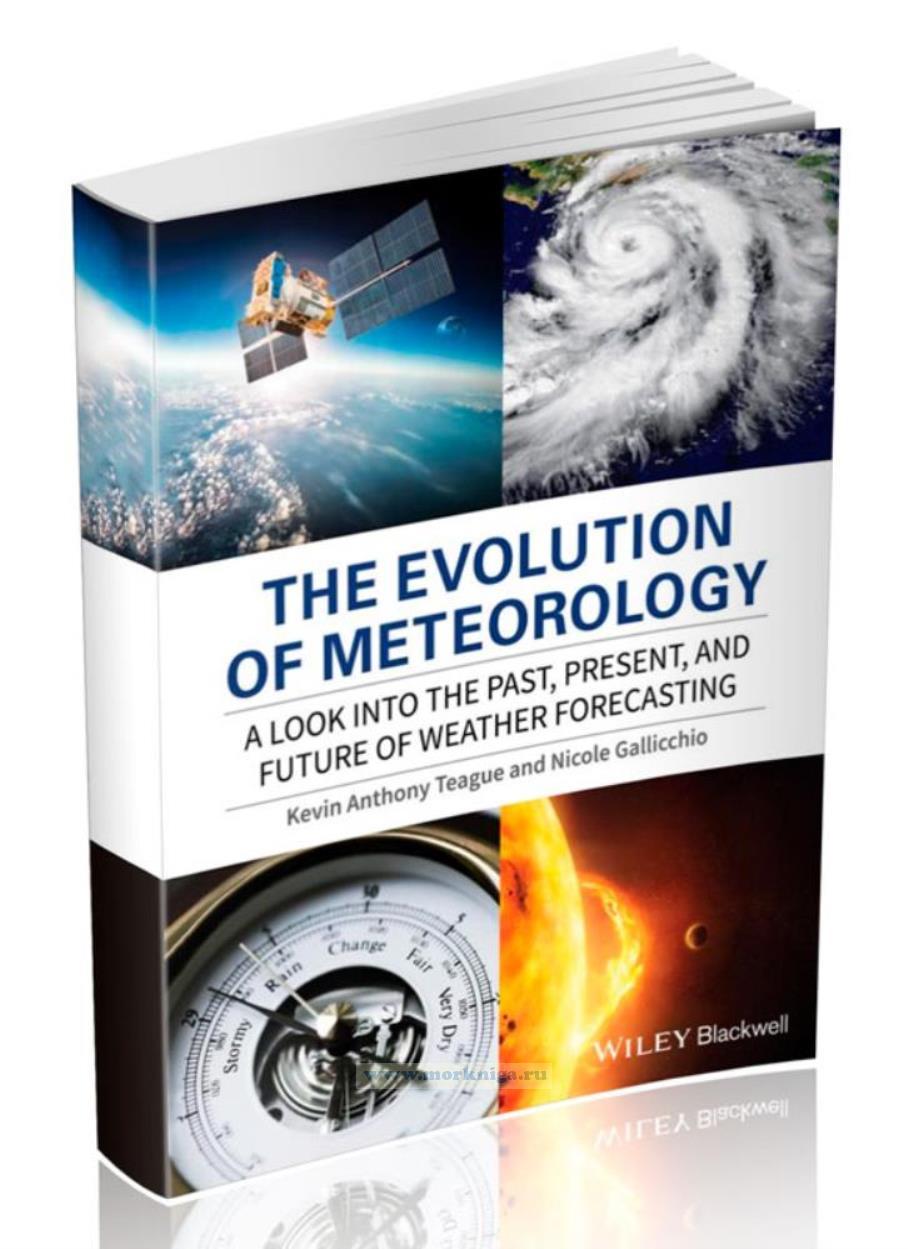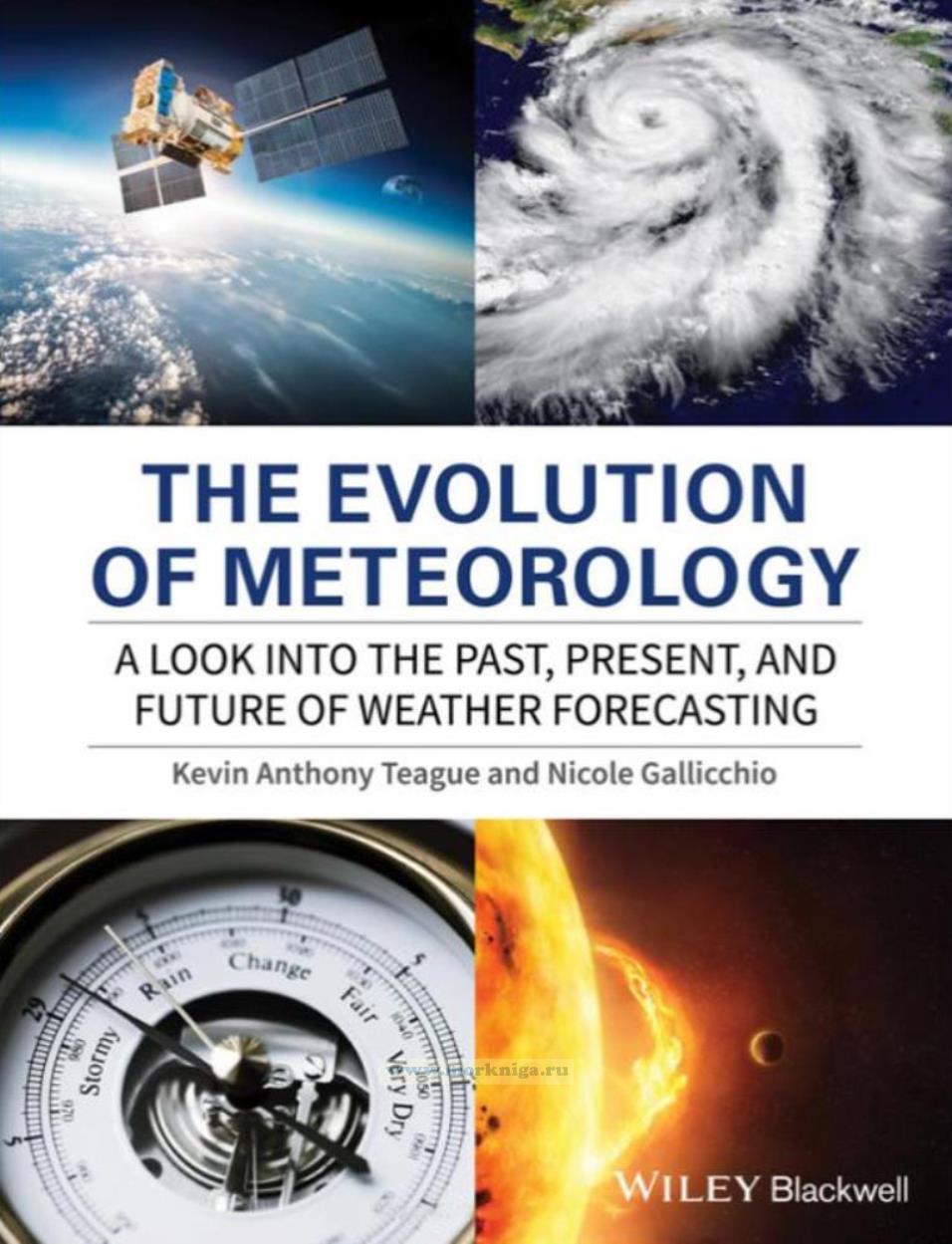Сб с 10 до 16
The evolution of meteorology. A look into the past, present, and future of weather forecasting/ Эволюция метеорологии. Взгляд в прошлое, настоящее и будущее прогнозирования погоды
Издание на английском языке
Meteorology, the study of weather, is a science that has been around since antiquity. Meteorology is a science that encompasses weather forecasting, climatology, atmospheric chemistry and physics, and oceanic interactions. These sciences are still being explored in great depth even though they have been studied for thousands of years. Advancements in the sciences have rapidly expanded in more recent years and are projected to continue to grow exponentially.
Contents
About the Authors
Preface
Acknowledgments
Section I Building Blocks of Meteorology (3000 bc-ad 1950)
1 Ancient Civilizations, Philosophical Theories, and Folklore (3000 bc-ad 1400)
Kevin Anthony Teague
1.1 Ancient Babylonians
1.2 Ancient Chinese
1.3 Aristotle and Meteorologica
1.4 Theophrastus and the Book of Signs
1.5 Ibn Wahshiyya and Nabataean Agriculture
1.6 William of Ockham and Nominalism
1.7 Religion, Folklore, and Animals
2 Inventions of Weather Instruments (1400-1800)
Nicole Gallicchio
2.1 Rain Gauge
2.2 Hygrometer
2.3 Thermometer
2.4 Barometer
2.5 Anemometer
3 The Birth of Modern Meteorology (1800-1950)
Kevin Anthony Teague and Nicole Gallicchio
3.1 Telegraph
3.2 Fitzroy
3.3 Hugo Hildebrand Hildebrandsson
3.4 Weather Balloons/Radiosondes
3.5 Birth of Governmental Weather Departments
3.6 Numerical Weather Prediction
3.7 Weather Broadcasting
3.8 Forecasting for WWII
3.9 Extreme Weather Forecasting: ‘Nowcasting’
4 Television and the First Computerized Advancements
Kevin Anthony Teague
4.1 Television in the Household
4.2 Television Weather Forecasting of the 1950s
4.3 Television Weather Forecasting of the 1960s and 1970s
4.4 The Beginning of Computers and Numerical Weather Prediction (NWP)
4.5 Computers and NWP in the Met Office
4.6 Computers and NWP Worldwide
4.7 The 1970s and Its Lasting Influences on Forecasting
5 Radar and Satellite History
Nicole Gallicchio
5.1 Invention of the Radar
5.2 Development of Weather Radar
5.3 Invention of the Satellite
5.4 Remote Sensing
5.5 Development of Weather Satellites
6 Personal Technology Boom
Nicole Gallicchio
6.1 Television Networks
6.2 Personal Computers
6.3 The Internet and Meteorology
6.4 Cellphones and Social Media
6.5 Movies
7 Covering Major Storms
Nicole Gallicchio
7.1 The Great Storm of 1987
7.2 Hurricanes and Tropical Cyclones
7.3 Tornadoes
7.4 Floods, Droughts, and Wildfires
7.5 Storm Chasing
7.6 Media Coverage
8 The Rise of Modern Computer Models
Kevin Anthony Teague
8.1 European Center for Medium?Range Weather Forecasting (ECMWF)
8.2 Main US Models
8.3 Specific Use Forecasting Models
8.4 Weather Research and Forecasting Model (WRF)
8.5 Global Data?Processing and Forecasting System (GDPFS)
8.6 Main Model Biases and Various Characteristics
9 Advancements within the Nationalized Governmental Weather Departments
Kevin Anthony Teague
9.1 The National Weather Service
9.2 The Met Office
9.3 Advancements across the World
9.4 Radar Development
9.5 New Satellite Developments
10 Meteorological Agencies at the Global and Private Level
Kevin Anthony Teague
10.1 World Government Agencies
10.2 Operations of World Organizations
10.3 Global Discussions
10.4 What a Private?Sector Weather Business Entails
10.5 Government vs. Private Sector
10.6 The Lesser?Known Services of the Private Sector
11 Climate Change
Nicole Gallicchio
11.1 Climate Discussions
11.2 Earth’s Lifetime Fluctuations
11.3 Past Climate Data
11.4 Permafrost and Climate Change
11.5 Greenhouse Gases
11.6 The Intergovernmental Panel on Climate Change
12 Extreme Weather
Nicole Gallicchio
12.1 Current Climate and Weather Trends
12.2 Classifying Extreme Weather
12.3 Extreme Weather Influences
12.4 Is Extreme Weather on the Rise?
12.5 Weather Pattern Predictions
13 Additional Meteorological Impacts
Nicole Gallicchio
13.1 Space Weather
13.2 Earthquakes and the Effect on Climate Change
13.3 Weather and the Effects on the Human Body
14 Weather Technology
Kevin Anthony Teague
14.1 Tropical Cyclone Technology
14.2 Coastal Flooding
14.3 Extreme Weather
14.4 Enhancements to Radar, Satellite, and Model Output of Supercomputers
14.5 Long?Range Forecasting
14.6 Various Planned Advancements
15 Global Cooperation
Kevin Anthony Teague
15.1 Overall Global Forecasting
15.2 Global Networking in Meteorology
15.3 Disaster Management
15.4 Global Radar and Satellite Cooperation
15.5 Global Data?Processing and Forecasting Systems
15.6 Global
Response to Climate Change
Section
Summary
References
Book References
Journal/Report References
Website References
Figure References - In Order of Appearance
Book Summary
Appendix Figures A-H
Index

